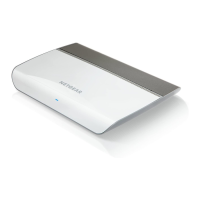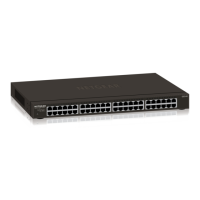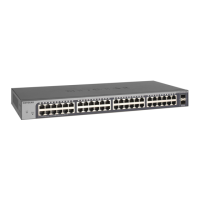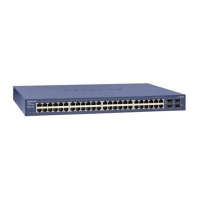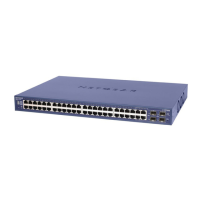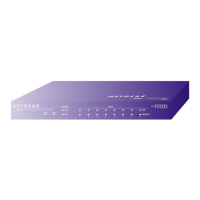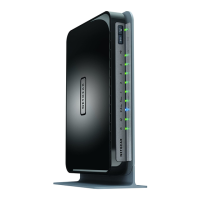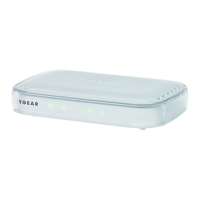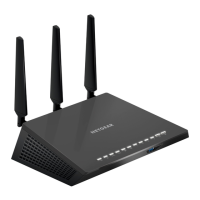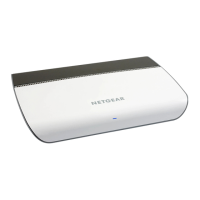
Do you have a question about the NETGEAR GS908E and is the answer not in the manual?
| Switch type | Managed |
|---|---|
| Quality of Service (QoS) support | Yes |
| Safety | IEC 60950-1:2005(ed.2) + A1:2009 + A2:2013, UL 60950-1, CAN/CSA C22.2 No. 60960-1-07, EN 60950-1: 2006 + A11:2009 + A1:2010 + A12:2011 + A2:2013, IEC 60950-1:2005 (ed.2)+A1:2009+A2:2013, AS/NZS 60950.1:2015 |
| Stackable | - |
| Certification | 47 CFR FCC Part 15, ICES-003:2016, ANSI C63.4:2014, EN 55022:2010 + AC:2011, EN 55024:2010, EN 61000-3-2:2014, EN 6100-3-3:2013, AS/NZS CISPR 22:2009 + A1:2010, VCCI V-3/2015.04, V-4/2012.4 |
| Product color | Black, White |
| Rack mounting | No |
| Number of multicast groups filtered | 128 |
| USB 2.0 ports quantity | 2 |
| Installed SFP modules quantity | 0 |
| Basic switching RJ-45 Ethernet ports type | Gigabit Ethernet (10/100/1000) |
| Basic switching RJ-45 Ethernet ports quantity | 8 |
| AC input voltage | 100 - 240 V |
| AC input frequency | 50 - 60 Hz |
| Power consumption (max) | 26.3 W |
| Power consumption (typical) | 3.3 W |
| Number of VLANs | 64 |
| Networking standards | IEEE 802.1Q, IEEE 802.1p |
| Virtual LAN features | Port-based VLAN |
| DHCP features | DHCP client |
| Jumbo frames | 9000 |
| Forwarding rate | 11.9 Mpps |
| Number of queues | 4 |
| MAC address table | 4000 entries |
| Heat dissipation | 89.8 BTU/h |
| Operating altitude | 0 - 3000 m |
| Storage temperature (T-T) | -20 - 70 °C |
| Operating temperature (T-T) | 0 - 40 °C |
| Storage relative humidity (H-H) | 0 - 95 % |
| Operating relative humidity (H-H) | 0 - 90 % |
| Harmonized System (HS) code | 85176990 |
| Depth | 164 mm |
|---|---|
| Width | 234 mm |
| Height | 33 mm |
| Weight | 370 g |
Information about related documentation for the switch.
Lists the items included in the switch's packaging.
Explains the meaning of the switch's status LEDs.
Details the components and ports on the switch's back panel.
Describes the information found on the switch's label.
Instructions for initial setup and powering on the switch.
Overview of various methods to find and connect to the switch.
Steps to access the switch and locate its IP address.
Guide to accessing the switch using the NETGEAR Insight mobile application.
Instructions for using the Switch Discovery Tool for network access.
How to use the ProSAFE Plus Utility for switch discovery.
Procedure for changing the switch's login password for security.
Steps to register the switch for support and alerts.
Manually configuring QoS modes and port rate limits for traffic management.
Controlling broadcast traffic and setting storm control rates.
Creating, saving, and managing custom performance presets.
Configuring settings for individual switch ports.
Explanation of Virtual LANs (VLANs) and their segmentation capabilities.
How to activate and manage port-based VLAN configurations.
How to activate and manage 802.1Q-based VLAN configurations.
Deactivating VLAN modes and deleting all configured VLANs.
Managing protocols like UPnP, Bonjour, and NSDP for switch discovery.
Managing multicast traffic and IGMP snooping.
Configuring static link aggregation for increased bandwidth or fault tolerance.
Procedure to change the switch's IP address to a static one.
Restoring the switch to use DHCP for IP address assignment.
Guide to manually checking for and installing switch firmware updates.
Procedures for backing up and restoring switch configuration files.
Methods to reset the switch to its original factory settings.
Configuring the switch's power saving features (EEE, cable length, link-down).
Turning the switch's LED indicators on or off.
Customizing the network name of the switch.
Displaying basic information like firmware version and MAC address.
Checking the number of active network connections.
Examining the operational status of individual switch ports.
Viewing detailed statistics for each port, including errors.
Utilizing auto-diagnostics and clearing reported events or problems.
Configuring and managing the loop prevention feature.
Setting up port mirroring to monitor network traffic.
Performing cable diagnostics to check network cable health.
Remotely rebooting the switch using its web interface.
Troubleshooting steps for accessing the switch due to subnet conflicts.
Table detailing the switch's default configuration settings.
Overview of the switch's technical specifications and standards.
Instructions on how to physically mount the switch to a wall.
